Sharlyn J. Lauby's Blog, page 64
August 19, 2021
10 Skills Every Manager Should Have

Estimated reading time: 4 minutes
Managers can learn a lot of things on the job. For example, how to approve timecards or the steps to conducting a legal and effective interview. But there are some skills that organizations want to see in managers from day one. So, if you’re an HR professional trying to communicate performance expectations for the management team, this list might be helpful. Or, if you’re an individual who wants to eventually become a manager, think about building on these skills:
Verbal communication. First and foremost, managers are coaches. They provide feedback to employees, conduct training, and offer performance guidance. As such, they need to be able to hold an effective two-way conversation.Written communication. Because all our conversations can’t happen in-person, managers need to have good writing skills so their words will be understood and interpreted correctly. The good news is that online collaboration and recognition tools make it easy to communicate with employees.Time management. When managers have too many projects and not enough time, they are forced to prioritize their work. That’s not necessarily a bad thing, except if employees become a low priority. Managers must be able to manage their time and still accomplish their goals – while supporting the needs of their employees.Decision making. Speaking of prioritizing, the best way to do it involves good decision making. Managers should be able to look at a situation and make an assessment about what do to. If they need additional information to make the decision, they can use their verbal and written communication skills (#1 and #2) to get what they need.Critical Thinking. Managers need to know when to go “big picture” and when to focus on details – or both. Good decision making (#4) involves knowing when you have the right amount of information – which could be very different – depending on your thinking.Asking questions. I’m viewing this a little differently from critical thinking (#5). I believe you can teach someone a problem-solving model. Managers need to be curious and willing to ask questions (versus assuming the answer). They also need to be open to letting others know when they don’t know something.Listening. I didn’t want to lump this in with verbal communication (#1) because it’s far too important. This is also part of asking questions (#6). Coworkers are okay with a little silence. The best managers know when to stop talking and start listening. They also know how to listen effectively.Customer service. Managers have multiple customers – both internal and external ones. They need to understand who their customers are, what they want, and how to engage them. This will be critical for effective time management (#3) and decision making (#4).Stress management. We can’t tell others how to manage their stressors but how we manage our own stress impacts others. Managers need to be able to recognize and manage their own stress levels. This will demonstrate a certain amount of calmness for the team.Conflict management. Managers should be able to address conflict both in terms of helping others resolve their conflicts AND being willing to defend their position, even if that means disagreeing with their boss or colleagues. They need to know how to mediate as well as manage workplace conflict.You probably noticed that many of these skills are related. If organizations want managers to be effective, they need to help them learn all the skills, not just a handful. And managers need to recognize that these skills will be something they will be working on for a long time. This isn’t a one-training session and we’ve mastered being a manager kind of thing.
Organizations place a lot of responsibilities on their managers. They have to. It’s important to clearly state the performance expectations of the role. Employees who want to be promoted into a manager position need to understand the skills they should demonstrate – and why they need to have them. The more open and transparent organizations are about skills, the more opportunities they can create for employees to develop them.
Image captured by Sharlyn Lauby while exploring the streets of Las Vegas, NV
The post 10 Skills Every Manager Should Have appeared first on hr bartender.






August 17, 2021
Performance Management: 5 Drivers for Success
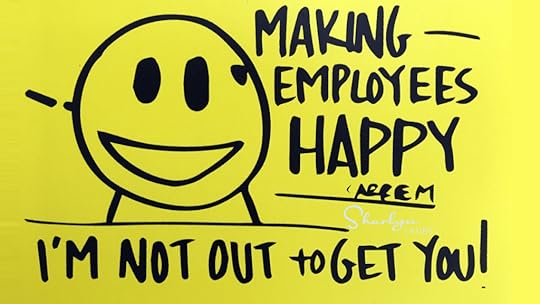
Estimated reading time: 3 minutes
Regardless of your opinions about the traditional annual performance appraisal, organizations still need to have a process for managing performance successfully. The process of performance management is a way to provide feedback, accountability, and documentation for performance outcomes. Even organizations that are “ditching” the annual review aren’t abandoning accountability, feedback, and documentation. So, it’s important for organizations to create a process that aligns with their needs and produces results.
The good news is that organizations have some flexibility in creating a performance management process that does works for them and their employees. That being said, there are five key drivers that will make any performance management process successful.
It starts with management involvement. Managers are responsible for setting performance expectations, providing feedback and coaching, and recognizing excellent work. This doesn’t happen on the sidelines. Managers need to buy into and be an active part of the performance management process.High performing individuals and teams have a big hairy audacious goal (BHAG) that drives their performance. In addition, organizational cultures should place an emphasis on smaller goals that align employee performance with that BHAG. The connection creates engagement because employees see how their work helps the company.Learning and development activities provide employees with the knowledge and skills to do the work. Companies that want high performance should make investments in employee learning and development. It will allow employees to accomplish their goals – both now and in the future.Feedback and coaching sessions to let employees know how they are performing. Employees want to do a good job. Managers should regularly tell employees about their performance – what’s good, what could be improved, and even more importantly, how to evaluate their own work. When employees can evaluate their own performance well, they can set their own goals and begin to become self-learners.Make performance management part of workplace culture with ongoing conversations. This component brings the other four items (management, goals, learning, and feedback) together. Organizations should create cultures where discussions about performance goals, learning, coaching, etc. are happening regularly.You might be saying to yourself, “Hey, this is a great list. But it’s easier said than done.” And, you’re right. If the list were easy, everyone would have nailed it by now. We’d all be working on high performing teams or something else. Mastering this list is a journey.
The other good news is that today’s technologies can support many of these performance management drivers. But technology isn’t a substitute for training or effective management or accountability. It’s also not a substitute for process. Organizations need to have excellent processes. Those pieces must be in place. Then, technology can effectively support the system.
Organizations cannot let the difficulty of the task keep them from creating a successful performance management process. Not taking the time to define the process isn’t fair to the technology, manager, and most of all, the employee.
Image captured by Sharlyn Lauby at the Society for Human Resource Management (SHRM) Annual Conference
The post Performance Management: 5 Drivers for Success appeared first on hr bartender.






August 15, 2021
5 Activities to Earn Recertification Credits

Estimated reading time: 3 minutes
A couple years ago, I wrote an article about all the different HR certifications that are available. There are quite a few and if you’re considering a certification, you’ll want to weigh what is best for you and your career.
One other thing to consider when it comes to certifications is how recertification works. I believe this is as important as the certification for a couple of reasons: 1) Recertification should be an accurate reflection of maintaining the credential. You should feel it’s challenging but attainable. 2) Recertification should be reasonable, meaning you can naturally accomplish and pay for it.
Regardless of the certification, probably the number one way to earn recertification credits is attend educational events and conferences. This has been really hard to do over the past year or so. Many of us have attended virtual programs, which is awesome. And I’m sure that you’re as delighted as I am that virtual events have really stepped up their game to deliver greater quality.
But I do have to admit that I like doing more than simply going to conferences to earn my recertification credits. I challenge myself to earn credits using different activities to expand my learning. So, if you’re looking for a few new ways to earn recertification credits, here are a few activities to check out.
Work Experience. As HR professionals, we’ve had a lot of new policies, programs, and guidelines that we’ve had to develop. And it’s not going to end anytime soon. All the research, program drafts, implementation strategies, etc. may count toward recertification. Check out the recertification page of your credential to see if all the hard work you’re doing might be considered.Reading. Some HR-related books have been pre-approved for recertification credits. I would be terribly remiss if I didn’t share that both of mine: “Manager Onboarding: 5 Steps for Setting New Leaders Up for Success” and “The Recruiter’s Handbook: A Complete Guide for Sourcing, Selecting, and Engaging the Best Talent” are pre-approved for SHRM recertification credit. Simply buy the book, read the book, then answer a few questions in an online quiz and – BOOM – recertification credits!Self-paced learning programs. There are FREE self-paced programs available that could be eligible for recertification credits. If you’re considering a MOOC (massive open online course), look to see if it qualifies. Also, the SHRM Foundation offers a Veterans at Work certificate to help HR pros learn more about hiring veterans. And the Employing Abilities @Work certificate is focused on helping HR professional manage the employment lifecycle for individuals with disabilities.Writing. You might be able to write an article, white paper, or book and earn recertification credit. Different credentials might have different requirements, so be sure to check out the specifics. But writing can be a wonderful professional development activity and you can share your expertise with others. (P.S. Speaking is also often included as a way to earn recertification credits. Maybe presenting a program either in-person or virtually is in your future!)Volunteering. Last but certainly not least, volunteering can be a great way to give back to your profession and earn recertification credits at the same time. Organizations are always looking for volunteers who are willing to share their experiences. And from personal experience, I can tell you that volunteering is great for networking and building lifelong professional friendships.Each certification program has their own criteria in place for recertification. The good news is there’s more than one way to earn recertification credits. And sometimes forcing ourselves to try new things is a good way to learn. Which is what certification is all about.
Image captured by Sharlyn Lauby while exploring the Neon Graveyard in Las Vegas, NV
The post 5 Activities to Earn Recertification Credits appeared first on hr bartender.






August 12, 2021
Failure Is Essential for Skills Mastery
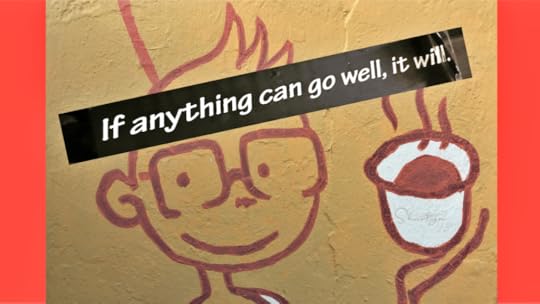
Estimated reading time: 3 minutes
In Daniel Pink’s book “Drive: The Surprising Truth About What Motivates Us”, he talks about the three elements for high performance: purpose, mastery, and autonomy. Today I want to focus on the mastery component.
Please note, this isn’t to say that the other two elements aren’t important. Organizations should design work that has meaning and purpose. And, I’ve written several articles about autonomy and the need for organizations to teach employees how to be autonomous (i.e. self-managing).
But during this year’s SAP SuccessFactors Conference, Kathleen Hogan, chief people officer at Microsoft, said something that made me realize that organizations have to do more than simply train employees for mastery. She said that “failure is essential for mastery”.
Organizations hire employees for skills. They train employees to learn new skills or enhance the skills they have. Right now, organizations are spending a lot of time thinking about upskilling and reskilling. As a reminder, here’s how I define the two terms:
Upskilling is the process of acquiring new skills. It’s typically related to the job that the employee currently holds – for example, a programmer learning a new computer software program.
Reskilling involves learning new skills, but it’s usually for the purpose of transitioning to a new role. It could be for a promotional or lateral opportunity such as an administrative assistant learning how to code or an accounts payable clerk learning payroll.
Back to Hogan’s comment. As organizations start designing their skilling, upskilling and reskilling programs, are they thinking about failure? Are they building into their program design ways to teach employees how to fail successfully? In thinking about the general concept of failure, a few things come to mind.
Organizational culture needs to be okay with the relationship between risk and failure. People make mistakes. It’s part of human nature. But if every mistake can be a career limiting or ending move, then people won’t take risk. And while risk can result in errors, risk can often lead to innovation and breakthroughs that are beneficial to the business.
Personal accountability must be a core value. This ties into the first point about company culture. If employees know that they can admit when they make a mistake (i.e. fail), then they’re more likely to admit it and work toward fixing the error. If the organizational culture plays the blame game, then employees know they don’t have to hold themselves accountable.
Managers and employees should receive training on how to manage failure. When mistakes, errors, or failures happen, this doesn’t mean there won’t be consequences. Usually, one of those consequences is that the mistake needs fixing. Organizations need to provide individuals with the skills to do the “fixing”, such as problem solving, critical thinking, and project management.
It’s not enough to simply give employees skills. Organizations need to give employees the ability to master skills, which includes being able to manage when something goes wrong. While this has always been important, I can see this being even more critical given our current hybrid workforce.
With employees working remotely, organizations need them to step up and admit when things aren’t going as planned. And they need managers who know how to effectively coach employees through failure into recovery and success. This allows projects to get back on track and the work to get done.
Image captured by Sharlyn Lauby after speaking at the Flora Icelandic HR Management Conference in Reykjavik, Iceland
The post Failure Is Essential for Skills Mastery appeared first on hr bartender.






August 10, 2021
Encourage Managers to Build a Peer Network
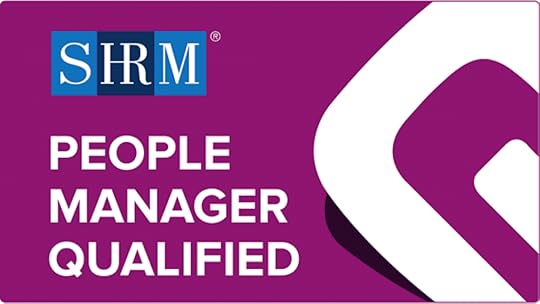
Estimated reading time: 4 minutes
We often talk about the importance of managers building good relationships with employees and even their boss. But I don’t know that we spend enough time talking about the importance of managers building good working relationships with their peers.
Something I liked about the PMQ was that, in the context of building a manager peer network, HR could be included as a part of that network.
I learned this lesson years ago. I used to work for a company that liked to interview…a lot. It was nothing for a candidate to have 5-6 interviews before they were extended an offer. And as much as I tried to get them to convert some of those individuals interviews into a panel or reduce the number of interviews in general, my efforts didn’t work.
Over time, I realized that the employees we hired arrived on the first day with a built-in network. When they had questions that they really didn’t want to ask the director of human resources or their manager, they had a network of colleagues who could help them. That network of colleagues were all those people who interviewed them.
So, something that I thought was unnecessary (like extra interviews), might have actually been an advantage. We found that new hires having a network helped with onboarding and retention. As a result, we started to explain it as an advantage during the hiring process.
SHRM People Manager QualificationThe value of a peer network was one of my big takeaways in the Society for Human Resource Management’s (SHRM) People Manager Qualification (PMQ) program. The PMQ program is a self-paced, virtual learning experience that helps managers gain the skills they need for success. I don’t want to give too much of the program away – there’s a short demo video on their website – but the PMQ is set in a modern workplace with characters that think and react very much like modern managers.
The program focuses on skills every manager needs to succeed like effective communication, performance management, team and situational judgment. Examples include dealing with office gossip, being liked as a manager, delivering tough conversations, tacit approval, and getting comfortable with being uncomfortable. The PMQ also discusses diversity, inclusion, equity, and belonging topics.
Again, what I really liked about the PMQ was that the program encouraged managers to build a peer network. Let’s face it, becoming a new manager is tough. Especially if you were promoted from inside the organization. You must transition from being one of the team to leading the team (and it’s not the same). Finding a group of peers who can support each other while having some fun along the way is essential.
The other thing that I liked about the PMQ was that, in the context of building a manager peer network, HR could be included as a part of that network. This is another topic we don’t spend nearly enough time on (I’ll save that for another day). Managers should have good working relationships with HR. Going to talk with HR should be a two-way discussion, not a one-way set of rules and regulations. I thought the PMQ did a good job of showing how partnerships with HR should work.
Managers Need Supportive Peer NetworksFrom a logistics perspective, the PMQ is divided into “seasons” where the managers deal with certain issues. Think of it like a TV show. An episode is typically less than 30 minutes. Managers could participate in an episode a day. It’s very doable. HR could get managers together for a debrief after each season and use it as an opportunity for managers to start building their peer network.
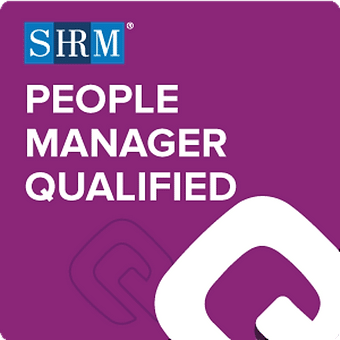
I could see the PMQ being very valuable for organizations that aren’t able to bring groups of managers together for a traditional development program. And there are several reasons in-person training might not be feasible – budgets, staffing challenges, and yes, the pandemic. But that doesn’t mean training should stop. In fact, training becomes even more important.
There’s no rule that says managers can’t build positive working relationships with other managers. And that manager groups can’t learn from each other, coach and mentor each other, and be supportive of each other. If organizations want their managers to be successful, giving them the tools and space to build their own support is essential.
The post Encourage Managers to Build a Peer Network appeared first on hr bartender.






August 8, 2021
Leaders Need to Prepare for Anger In the Workplace

Estimated reading time: 3 minutes
I have fallen in love with the Apple TV show “Ted Lasso”. I know nothing about association football (aka soccer), but the overall vibe of the show is just wonderful. Even when things aren’t going as planned for the characters. In fact, there’s one scene from Season 1 that’s become a little joke between me and Mr. Bartender. When team captain Roy Kent is struggling during a training session (and swearing the whole time), Ted Lasso is watching from the sidelines and quietly saying “Swear it out, Roy. Swear it out.” So, when we get frustrated or exasperated at a situation, we just laugh “Swear it out!”
The reason that I’m bringing up this scene from Ted Lasso is because I’m reading lots of articles about employees being frustrated and angry. I’m sure you are too. Employees are angry about being asked to come into the office. And employees are frustrated at all the changing office guidelines. A survey from Verizon indicated that nearly a third of respondents didn’t tell their employer when they tested positive for COVID-19. The reason? They didn’t think it was a big deal and didn’t want to have to take paid time off.
In addition, employees are angry about vaccines. Regardless of your particular views about the vaccine, it seems like either employees are angry at their co-workers who haven’t received the vaccine or employees are angry at people asking them to get the vaccine. Jon Hyman wrote an interesting blog post about vaccination-status harassment. Yes, it’s an issue. Check out his article.
So, I totally understand the frustration. I really do. Unfortunately, getting rid of the frustration isn’t as simple as yelling “Swear it out!” Which is why there’s something organizations need to start thinking and talking about. That’s how their company culture deals with the anger.
Over the past few months, many CEOs have said that they want employees to return to the office. They feel that part of their culture is having everyone together. Honestly, I understand the importance of good teamwork and collaboration, however, I’m not sure how true it is that the company culture is dependent on everyone being in the same building. But let’s for a moment say it’s true. Then that means this growing anger has the potential to is becoming part of the company culture. Leaders need to be ready for that. And I’m not sure they are.
I will admit that I don’t have all the answers, but here are four things to keep in mind.
Acknowledge the challenge. Simply ignoring employee anger and frustration could only make the situation worse. And banning certain topics of conversation is only shifting the frustration (think software company Basecamp). Check existing benefits and programs. Look to see if the company’s wellbeing or employee assistance programs have resources to help employees.Offer resources. Give employees at every level the tools to help them manage their emotions. And give managers the tools to support their teams.Recognize positive efforts and outcomes. Moving through an intense situation with a co-worker or team is tough. As employees make the effort, recognize it. Let them know that they have support.The anger and frustration that employees are feeling didn’t happen overnight and it’s not going to go away overnight. Organizations need to acknowledge this. Managers should be prepared to handle emotional situations. And employees need to think about their personal wellbeing and seek help when necessary. We can’t ignore this because if we do, it could have a lasting negative impact on company culture.
Image captured by Sharlyn Lauby while exploring the streets of Miami, FL
The post Leaders Need to Prepare for Anger In the Workplace appeared first on hr bartender.






August 5, 2021
You Should Give Yourself an Annual Review

Estimated reading time: 3 minutes
During the pandemic, I started reading a few curated electronic newsletters focused on self and home. I totally blame them for our sourdough starter project and the fact that I’m reading a Reddit thread on retro library music. Over time, these newsletters have expanded their focus to include remote work, which totally makes sense. One of them – and I apologize because I can’t remember which one, shared a link to a document titled “The Ultimate Annual Review”.
The Ultimate Annual Review was created by Steve Schlafman, who describes himself as a coach and angel investor. The document is FREE for download. I don’t think I’m giving anything away if I tell you that it has five activities:
Moments & MilestonesReflections & LearningsCurrent Life AssessmentIntentions for 20XX (the document currently says 2021, but you could change it to 2022)Planning for 20XX (same as number 4, you have to change the year)While I think the original intent of the document was to provide a template for an annual “life” review. I could see the document being something you could use for your personal and professional life. It’s not designed to replace the company’s performance review, but you might find the experience of doing it to be very insightful.
One of the things that could have been tough over the past year was dealing with the lack of feedback. We’re used to getting reactions to our work and when we work remotely, it can be a challenge. I know there are a few companies that either scaled down or didn’t do performance reviews last year. And now, many organizations are starting to delay reopening offices. So, I wanted to share this document with you as a way for you to give yourself an annual review.
If your organization does annual reviews, great! This document could be a way for you to prepare for your annual review conversation. If you’re a freelancer or consultant, this could be a perfect way to evaluate your own work and set some goals for the upcoming year. And if you’re looking for a new opportunity, you might be able to use this document to start planning your job search.
There’s a lot going on right now. It’s easy when things are changing all the time to forget how much we really have accomplished. Or lose sight of our goals. The Ultimate Performance Review could help us focus and plan for the future – even if it might not include sourdough.
Image captured by Sharlyn Lauby while sitting at her desk in Gainesville, FL
The post You Should Give Yourself an Annual Review appeared first on hr bartender.






August 3, 2021
How to Develop a Workforce and Staffing Plan

Estimated reading time: 5 minutes
(Editor’s Note: Today’s article is brought to you by our friends at Criteria , a leading provider of pre-employment testing services. To learn more about how pre-employment testing can benefit your talent acquisition strategy, check out Criteria’s “ Definitive Guide to Pre-Employment Testing ”. I’ve found it to be a comprehensive guide that I keep handy all the time. Enjoy!)
With all the talk about today’s labor market, organizations cannot afford to waste time and resources in their recruiting efforts. Well, honestly, organizations can never afford to waste time and resources, but you get my point. When organizations are competing for the best talent, time is of the essence. One way that organizations can save time and resources in their recruiting is by having a workforce and staffing plan.
What’s a Workforce and Staffing plan?While the terms are sometimes used interchangeably, a workforce plan and a staffing plan are different. A workforce plan is a long-term look at the organization’s talent needs. Think 2-5 years out. It typically aligns with the organization’s strategic plan.
Let’s say we’re a retail establishment and we want to expand into e-commerce. Over a span of time, we will have to start hiring people with e-commerce expertise to help us build a strategy. Then, we will need to start hiring sales reps with e-commerce experience. Right now, it’s possible we have employees who could learn about e-commerce. Instead of hiring from the outside, we might want to develop the e-commerce team from within. They already know our products. A workforce plan helps us map out that long term strategy for “buying and/or building” the best talent.
A staffing plan is a shorter-term plan that helps organizations with their more immediate hiring needs. Think 12-18 months out. Many organizations prepare a staffing plan in conjunction with their annual budget because a staffing plan might have a better view of current hiring trends.
Using the same retail example as above, maybe the organization doesn’t plan to start working on their e-commerce initiative until next year. The staffing plan helps the organization stay focused on building the talent pipeline they need right now, while not losing sight of the company’s long-term strategy. It’s possible that the workforce plan can be used to assist in the development of the staffing plan.
How to Develop a Workforce and Staffing PlanOrganizations should consider having both a staffing plan and a workforce plan. Here’s how to develop them.
Step 1. Look at the organization’s current strategic plan. The plan should provide some insight into what the organization wants to accomplish and the timeframe that they want it to happen. Specifically look for the knowledge, skills, and abilities (KSAs) that employees will need to have in the future.
Step 2. Review the KSAs that employees currently have. Organizations might have employees who are being underutilized, meaning they have talents not being used in their current role. Now is the time to understand what those talents are. This information is often readily available in the organization’s human resources information system (HRIS) or learning management system (LMS). If you don’t have those technologies or you’re only developing a plan for one department/division (and yes, you can do that), maybe go old school and do an Excel spreadsheet. It will get the job done.
Step 3. Evaluate the skills gap. This is the step where the organization needs to look at the skills they have and the ones they will need in the future. Conduct a traditional gap analysis. The gap will help the organization do two things: A) determine the KSAs that need to be a priority and B) create a plan to bridge the gap – either through hiring or training or both.
Step 4. Make a workforce plan and a staffing plan. The plans do not need to be fancy. They do need to be functional. You can develop the plans in a SMART format (and regular readers of HR Bartender know how I love a good SMART plan!)
Step 5. Use and review the plan on a regular basis. I will admit that it seems weird to have a step that says “use the plan” but I can’t emphasize enough the importance of actually working the plan. It’s essential to make sure that the assumptions used to create the plan still exist. For example, the labor market is very competitive right now. One external change could have a big impact on your staffing plan. Also, the organization must consider flow – meaning the number of employees who are promoted, transferred, and leave the company.
Make the Plan. Work the Plan.This brings us back to the opening of this article – organizations cannot afford to waste time and resources. Having a plan to get the talent you need does that. But plans only work if you use them.

Having a documented strategy that identifies the talent that the organization needs is a big part of helping the organization accomplish its goals. Because you can’t do it without people. However, there’s another component in finding the best talent. And that’s having a hiring process that works. And works well. So, to be successful in talent acquisition, part one is having a good idea (and a plan) of who you need to find. Then part two is having a good hiring process to get them onboard.
I hope you can join me and the Criteria team for a webinar on Tuesday, August 17, 2021 at 10a Pacific / 1p Eastern which will be focused on “Hiring in a Talent Shortage: How to Identify Blocks and Create Solutions”. As always, if you’re already booked that day, sign up to get the recording. This is one event that you’ll not want to miss!
The post How to Develop a Workforce and Staffing Plan appeared first on hr bartender.






August 1, 2021
Bookmark This! The Success Edition
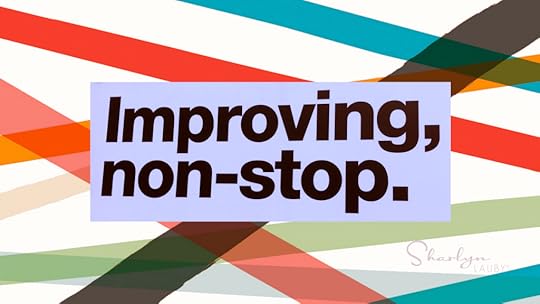
Estimated reading time: 3 minutes
I believe as a general rule, people want to find themselves in whatever their version of success looks like. I also believe that defining what success looks like can be really hard. Maybe one of the reasons that we’re reluctant to define success is because if we do and then we don’t achieve it…well, that’s often called failure. And we’ve attached a negative connotation to failure.
I think it’s time to do a little reality check where success is concerned.
Success is a fluid concept. We are allowed to establish what success looks like and then change it. We can change it as many times as we want. Granted, if you change it too much, how will you ever know what you’re striving for? But you get my point. Success is not a plan once and we’re done activity.
It’s also important to realize that the external world – for which we have no control – often messes with our success plans. Those moments are good opportunities for us to reflect on where we are and if we’d like to continue the plan. That’s not failure. That’s called being practical. We can always revisit our plans at another time – if we want to.
I ran across a few articles about success that I thought might be helpful right now. Both organizations and individuals are making plans. They’re revisiting what success looks like. And that’s a good thing.
Employees Become Successful When They Know What Success Looks Like
Performance is important. Organizations want employees to perform at a high level. Managers want that too. And guess what, employees also want it so they can succeed in their roles. We need to give managers and employees the tools to identify and talk about successful performance.
Use Your Job Failures to Achieve Career Success
If you’re searching for a job, are you regularly asking yourself, “What did I do well during that interview?” and “What should I consider doing differently next time?” Don’t assume that if you got the job you did all the right things. Conversely, don’t assume if you didn’t get the job that you blew it.
Celebrate Your Successes Through Micro Victories
Micro-victories or micro-celebrations are a great way for individuals, teams, and organizations to recognize their successes, stay focused on the big picture, and keep motivation at a high level. Because all those little steps will be what creates the “next BIG thing” in the organization.
Celebrate Your Organizational Successes
Give employees, managers, and the company’s HR department a way to enjoy their successes. It allows everyone in the organization to see that the company is accomplishing their goals (even if they weren’t directly involved in them). It shows everyone in the company that when you do good work, the team gets to celebrate.
Whether it’s at an organizational or individual level, now is a perfect time to establish your plans for success. Decide what’s important and put action steps in place to get there. But don’t forget to celebrate along the way. And if you need to review and reset, do it. Just be sure to take a moment to reflect and understand the reason. That will help you with future successes.
The post Bookmark This! The Success Edition appeared first on hr bartender.






July 29, 2021
Is It Time to Move From Family Friendly to Life Friendly

Estimated reading time: 3 minutes
I read an article over on the site AIHR Digital recently that captured my attention. It’s titled “How to Make Your Organization More Life-Friendly”. What caught my attention was the part about “life friendly”. I thought author Suzanne Lucas (you might know her as Evil HR Lady) made a valid point about the difference between family friendly and life friendly.
I tend to stay out of conversations that are related to parenting since Mr. Bartender and I do not have children. Honestly, I’ve heard my fair share of “If you’re not a parent then you can’t possibly understand.” comments. But what I loved about the term “life friendly” is that it applies to both parents and non-parents. It also applies for those individuals who might not have “blood relatives” but they have people in their lives who are their number one priority.
Over the past few years, organizations have realized the value of employee experience. They also have realized that employees will have a better experience at work if they are allowed to bring their whole selves with them. No more of this “leave your personal life at the front door” stuff. I think it’s the reason that organizations are offering more in terms of parental leave programs, wellbeing programs, etc.
That’s why it might be time to take family friendly one step further. It’s time for organizations to start thinking in terms of life friendly policies and benefits. I think it’s more inclusive and allows organizations to demonstrate that all employees are important and valued. That being said, there are a few things for organizations to consider.
Life friendly isn’t simply a name change. Creating life friendly policies and benefits isn’t simply taking old policies and changing the name. So, companies shouldn’t change parental leave to life leave. HR departments will want to look at policies and make sure they are inclusive of more than one or two situations.
Life friendly policies and benefits have to align with the employee life cycle. When we say life friendly, we’re not just talking about parental leave benefits and policies. It’s all policies and benefits including time off, insurance, employee resource groups (ERGs), etc. HR departments might want to hold focus groups with employees to understand what life friendly means to them.
Life friendly means everyone. Speaking of focus groups, this is another opportunity to learn from employees what type of relationship they want to have with the organization. All of our employees have very unique lives. This is a very basic statement but sometimes we forget it. I see life friendly taking into account the uniqueness of everyone’s life.
Over the past year, employees have learned a lot about themselves. One big thing they’ve learned is that time is precious. They plan to refocus themselves on the people and things that matter to them most. And they will be looking for their organizations to support that.
Life friendly policies and benefits are an opportunity for organizations to demonstrate that they understand and support their employees. That they want all of their employees to feel like they belong.
Image captured by Sharlyn Lauby – – IYKYK
The post Is It Time to Move From Family Friendly to Life Friendly appeared first on hr bartender.






Sharlyn J. Lauby's Blog
- Sharlyn J. Lauby's profile
- 10 followers



